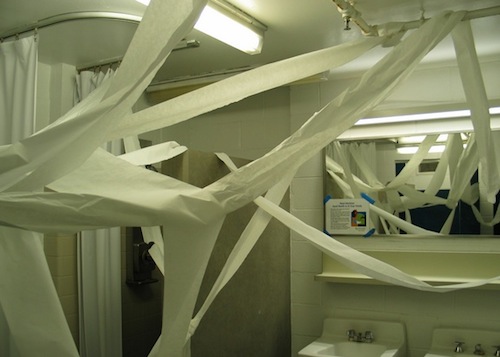When it comes to paper waste the workplace is one of the worst offenders in America.
According to the Environmental Protection Agency, the average office worker generates approximately two pounds of paper and paperboard waste daily.
An estimated 90% of all office waste is paper—that’s a lot of dead trees!
Complicating matters, even employees that recycle and compost at home may relax their standards at work due to a company culture that lacks reducing consumption.
Cutting paper usage in particular, saves money on supplies and trash disposal, in addition to reducing a company’s ecological footprint.
What’s even better than recycling?
Going digital.
Are you ready to change your workplace from white to green?
Here’s a simple six-step plan to decrease your office’s paper waste.
#1. Evaluate your weak spots.
Where exactly is the greatest amount of waste happening?
You may notice that the trashcan beside the printer is constantly overflowing with mess-up print jobs or the trashcans in the bathrooms are filled with paper towels.
Certain coworkers can likely abuse their printer privileges—like the guy who insists on printing every email for his files or the manager who prints copies of memos for every employee when a simple email would suffice.
During the next few weeks, pay close attention to the type of paper that’s landing in your bins every day, and where it’s coming from.
Based on this data, you can develop a specific plan to eliminate unnecessary waste.
# 2. Institute non-confrontational small changes.
Even very minimal changes can have an impact on your workplace’s paper consumption. Adjusting your font size, margin size and setting printers to print double-sided documents can significantly decrease your paper use—and decrease ink usage as well.
If your printer doesn’t have an attachment to print to both sides of paper, replace it. This is an inexpensive upgrade you can order online or have your service provider install.
A company-wide email explaining how to adjust print settings can also make a huge difference—knowledge is power.
# 3. Next, tackle the bigger problems that might be met with resistance.
Sometimes you have to make dramatic changes in order to really have an impact. If employees use disposable paper cups at the water cooler, they may balk at the idea of being asked to provide—and wash!—their own cups.
To ease the transition, consider purchasing a reusable cup or mug with your company logo for each employee.
You may also decide to take paper calendars, sticky notes and scratchpads off the office supply list—encouraging employees to use their computers to track events and take notes instead.
Depending on your field, you may even choose to do away with your printer entirely!
# 4. Look beyond the printer.
True, most of an office’s paper waste comes from the printer, but not all.
If you’re using paper towels in the restrooms, consider replacing them with energy-efficient hand-dryers—you’ll quickly see a return on your investment when you stop purchasing huge boxes of paper towels.
In the break-room, buy value-sized packages of sugar rather than individual packets.
# 5. Reconsider your print marketing collateral.
Remember, your paper usage doesn’t just include what’s in the office. Think about what you send out into the world, too. Print materials are still an important part of many company’s marketing efforts but sometimes digital materials can be even more effective.
Reconsider what kinds of paper materials you’re using and ask yourself if digital would work as well for your needs.
# 6. Educate employees.
No office greening effort works without buy-in from employees.
Be open with them about where you’ve found the worst instances of waste—you don’t have to name names— make them aware that you’ve recognized a few collective bad habits.
Outline your plan for cutting back on waste and encourage them to contribute their own ideas. Continue to recycle any paper that you do use and be sure employees clearly know what can and can’t go into the recycling bin.
How much paper does your office use and have you taken any measures to cut back?
Share your ideas in the comments!
~
Love elephant and want to go steady?
Sign up for our (curated) daily and weekly newsletters!
~
~
Editor: Ashleigh Hitchcock
Photo: wikipedia












Read 6 comments and reply